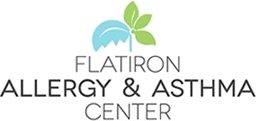Atopic & Contact Dermatitis
Atopic Dermatitis
Atopic dermatitis is a chronic, relapsing inflammatory skin disorder that usually starts at age < 5 years. It is characterized by itchy skin that becomes inflamed with scratching. For this reason, atopic dermatitis is known as the “itch that rashes.” Skin findings commonly include:
- Redness
- Cracking
- Weeping of Clear Fluid
- Crusting
- Scaling
Atopic dermatitis is frequently associated with other allergic conditions including allergic rhinitis, food allergy, and asthma.
Mutations in filaggrin, a skin barrier protein, are strongly associated with the development of atopic dermatitis.
Allergists are considered the experts in atopic dermatitis and diagnose this condition based on history and exam.
Triggers of atopic dermatitis include:
- Allergens (environmental and possibly food)
- Irritants (wool, soaps, detergents, perfume, chlorine, etc.)
- Emotional Factors
- Temperature
- Climate
The goals of treatment are to minimize itching and prevent the development of rash.
Treatment focuses on skin moisturization, measures to decrease skin itching, avoidance of allergenic and irritant triggers, and use of topical immunomodulators including corticosteroids and calcineurin inhibitors when needed.
By visiting an Allergist, you too can take control of your atopic dermatitis and improve your quality of life.
Contact Allergic Dermatitis
Contact allergic dermatitis is a type of inflammatory skin reaction that can be secondary to:
- Antibiotics (topical neomycin)
- Cosmetics
- Jewelry
- Fragrances
- Soap
- Household and Industrial Chemicals
- Rubber
- Plant (poison ivy, poison oak, poison sumac)
It is considered a delayed type hypersensitivity reaction.
Symptoms of contact allergic dermatitis include localized:
- Redness
- Cracking
- Weeping of Clear Fluid
- Crusting
- Scaling
Allergists are considered the experts in contact allergic dermatitis and diagnose this condition based on history and, if indicated, patch tests.
The goals of treatment are to prevent the development of rash.
Treatment focuses on avoidance of the contact allergen and use of topical steroids in the case of current related dermatitis.
By visiting an Allergist, you too can take control of your contact allergic dermatitis and improve your quality of life.
